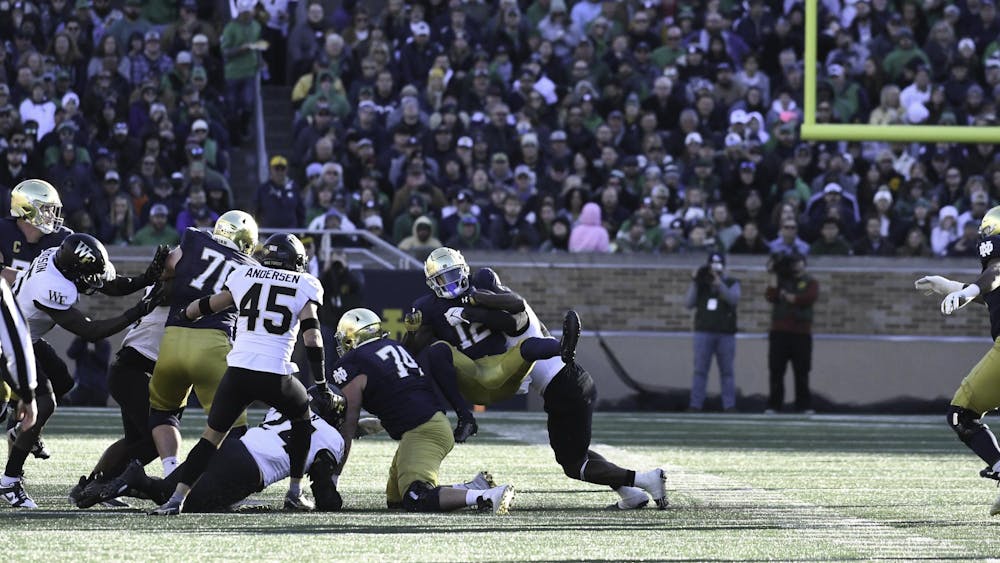Seven hundred sixty-two home career home runs. 0.444 OBP. 7 NL MVP awards. Quite possibly the best player ever to step foot on a baseball diamond. It was already a farce that Barry Bonds was not yet in the Hall of Fame, but after last week’s election of David Ortiz, it is nothing short of an embarrassment to the sport. I have nothing against Big Papi. He is certainly a Hall of Fame-caliber player, but he never came close to what Bonds accomplished in his career.
Bonds compiled a ridiculous 162.7 wins above replacement (WAR). The difference between the career WAR of Bonds and that of Ortiz is approximately equal to the career WAR of Mickey Mantle. I could write an entire sports authority only on Bonds’ absurd accomplishments, but of course, his numbers are not the reason he was left off the ballot for the 10th and final time last week.
We’ve always been told, “cheating is bad." That’s presumably why 134 voters left Bonds off their ballots in his final year of eligibility. However, Ortiz’s career was also tainted by performance-enhancing drugs (PED). He tested positive once in 2003 — although not to the same level that Bonds did. Other players who have long been rumored to have taken PEDs — though they never failed a test — such as Pudge Rodriguez and Jeff Bagwell are in the Hall of Fame. Bud Selig, baseball’s commissioner from 1992 to 2014, was inducted in 2017 despite conveniently ignoring rampant steroid use for more than a decade. This then begs the question: Is there an “acceptable” level of cheating?
The league did not implement mandatory testing until 2003, despite steroids having been banned since 1991. This meant that there were no incentives to not take steroids. Players like Bonds, Roger Clemens, Sammy Sosa and Mark McGwire are vilified not because they were the most rampant users but because they were the best players of an era in which a great number of players were using PEDs. The Mitchell Report, which started baseball’s reckoning with the steroid era when it was released in 2007, named an astounding 89 players, and, since the league wasn’t testing for so long, there are probably even more that we don’t know about. I’d be willing to wager that there are at least a handful of players in the Hall who have a past with PEDs that no one is aware of.
Secondly, let’s consider what Cooperstown is actually about. Their mission statement reads: “The Hall of Fame’s mission is to preserve the sport’s history, honor excellence within the game and make a connection between the generations of people who enjoy baseball.” Bonds left an indelible mark on the history of baseball. McGwire and Sosa’s home run race of 1998 helped reignite nationwide passion for the sport after years of declining popularity. In short, these players are just as important to the history of our nation’s pastime as all the players whose plaques hang proudly in Cooperstown.
Every player must be considered in the context of their time. Denying Black players the right to play in the league is arguably a much bigger stain on the sport’s history than the steroid era. Cap Anderson was one of the first players to be inducted into the Hall of Fame despite once refusing to play in an exhibition game against the Toledo Blue Stockings if they played Moses Fleetwood Walker, who was the first Black player in the major leagues. Ty Cobb is widely considered an all-time great despite being notoriously racist. Yet somehow, these men are considered to be an important part of the sport’s history and players from the steroid era are not.
There is also absolutely no consistency or clear criteria among the Baseball Writers Association of America (BBWAA) writers as to who they vote for. Writers are not required to make their ballots public, which creates a complete lack of accountability. According to Ryan Thibodaux, a well-known ballot tracker, 56.3% of ballots were made public this year. Among the writers who revealed their votes, Bonds cleared the required 75% threshold, but just barely. However, after the 172 non-public ballots were counted, he dropped down to 66%. Among the public ballots, there were 94 electors who voted for the maximum 10 players, yet there were four who submitted a blank ballot. One writer even submitted a ballot with Jeff Kent as his only choice.
It is not clear that there is any reasonable alternative to the BBWAA. There are four era committees that consider players from different eras of baseball who are no longer eligible on the BBWAA ballot. These committees have given us some of the more questionable Hall of Fame inductions in recent years, and many have complained that the Hall of Fame is turning into the “Hall of Very Good” thanks, in large part, to these committees. Yet, the Today’s Game committee presents Bonds, Clemens, and others with their last chance to get into the Hall. Their next meeting is in December of this year, which will be telling as to Bonds’ future.
Contextualization is key. I do not believe the Hall of Fame should simply forget about the steroid era. Instead, perhaps they should put an asterisk on their plaques, or otherwise educate visitors about the era’s scandals. I also do not believe that steroids are good for the game, nor that they should not be punished. Perhaps in a world in which we could be perfect judges of moral character, Bonds’ exclusion from the Hall could be justified. But we don’t, and the world is too complicated to deal in moral absolutes. It is simply a shame to see one of the sport’s all-time greats on the outside looking in.













